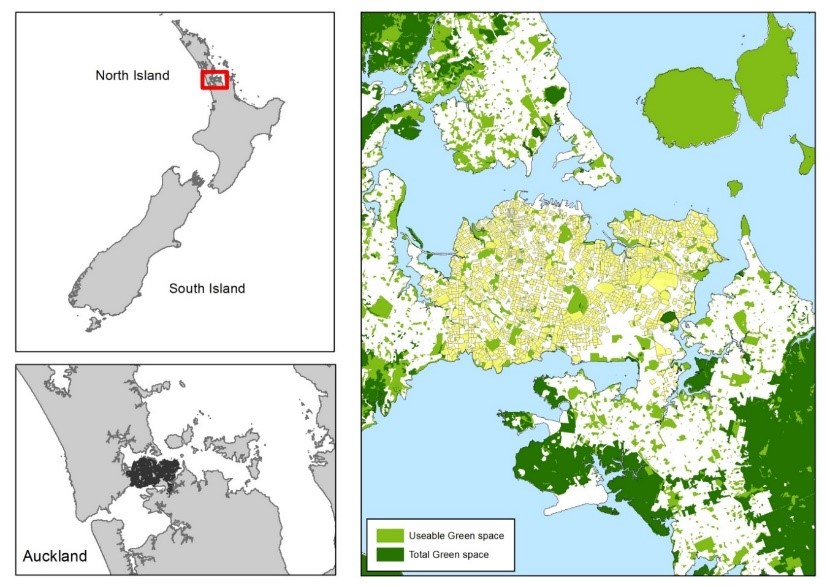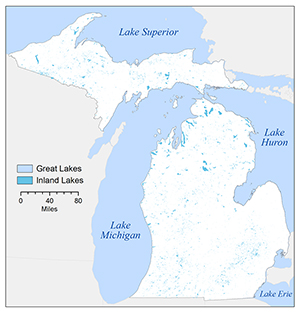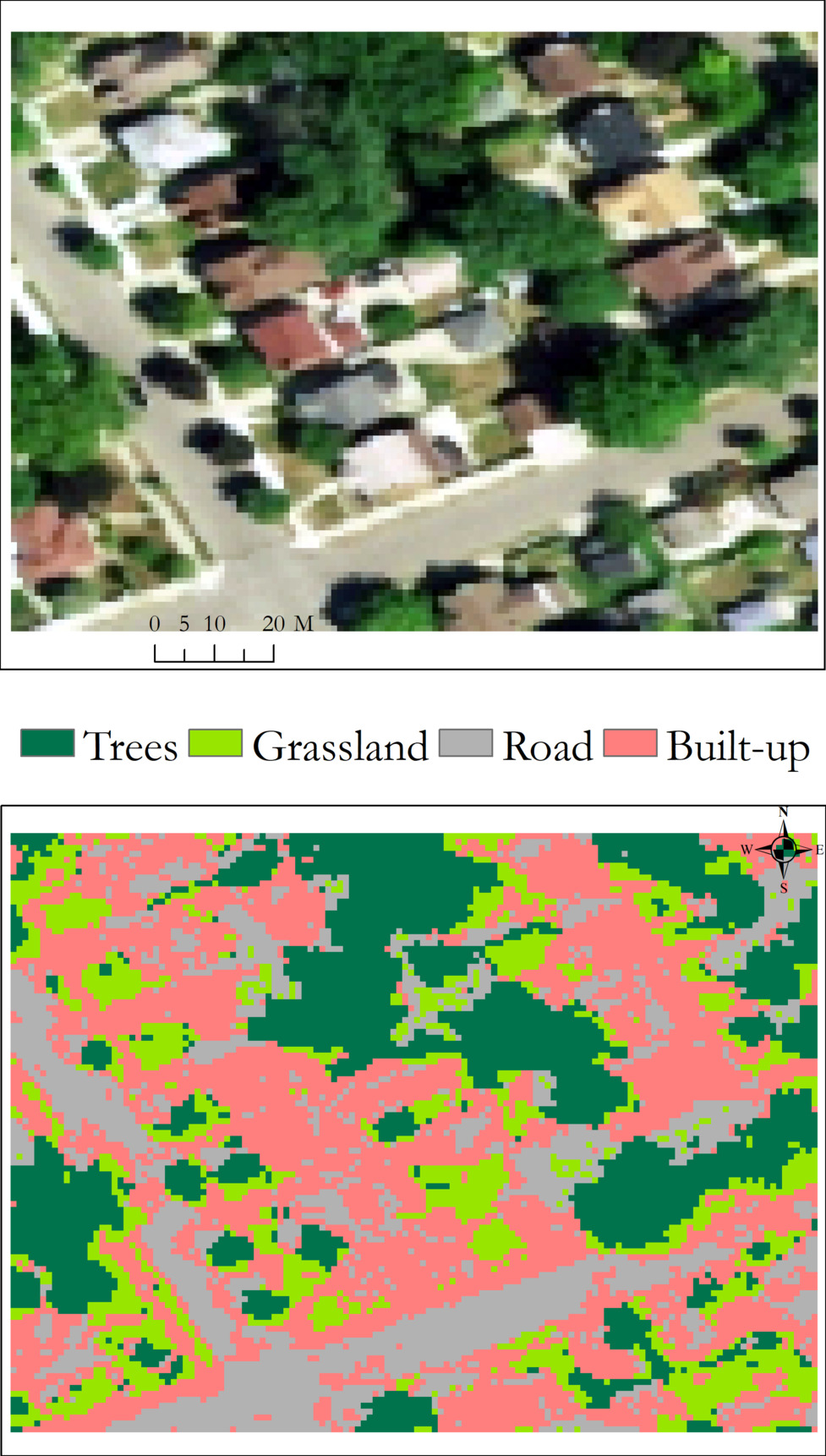Theme 1: Relationships between nature and health in cities
Increasingly, health geographers, landscape architects, psychologists and public health practitioners are interested in aspects of cities which may promote health and lower inequalities. A growing area of research is how green spaces such as parks, forests, and meadows may foster physical activity, lower blood pressure, promote relaxation, improve cognition and enhance sleep. More recently, this focus has expanded to include blue spaces including oceanic and fresh water bodies. Still, there are many gaps in the literature and inconsistencies in findings. Much of Dr. Pearson’s current and ongoing research aims to address these issues.
Access to green space is associated with better mental health. Dr. Pearson has explored how residential exposure to both green and blue space may foster better mental health outcomes in cities, particularly in New Zealand. She first examined the ecological relationship between neighborhood-level proximity or access to green space and mental health in Auckland, New Zealand – the most populous city in the country. She found that decreased distance to useable green space and increased proportion of green space within the neighborhood were associated with lower rates of anxiety/mood disorder, suggesting that the benefits of green space on mental health may relate both to active participation in green spaces near the home and also to visual exposure to greenness (passive enjoyment)
 Auckland, New Zealand
Auckland, New ZealandBut, can simply looking at nature improve health? The quantification of visual exposure to nature has been lacking in development. So, Dr. Pearson and colleagues developed a novel geospatial technique to quantify visual exposure to greenness, called the Vertical Visibility Index (VVI). The scores for ‘greenness’ calculated using VVI were then compared to scores calculated using a Google Earth Street Map Image (as a gold standard), yielding a strong, significant correlation (r = 0.863, p < 0.001). In other words, the VVI yields similar results to what can be seen in an image taken at a location at a human level (rather than aerial imagery). This new method is a valid tool which can be used the accurate representation of green and blue space visibility from a human perspective.

In Wellington, the capital of New Zealand, Dr. Pearson and colleagues also tested the relationship between this new visibility score and individual-level mental health, using K-10 scores. K-10 scores are a simple measure of psychological distress, designed for large sample population studies where scores range from 0 to 40 (higher values indicate increased distress). In contrast to their first study, they did not detect an association between visual exposure to greenness and mental health (but they did for blue space). In fact, every 10% increase in blue space visibility, one might expect a 1/3 point reduction in K-10 scores. The reason for not detected a relationship for green space may be that Wellington is surrounded by a town belt covered in forest, meaning that most people can see green space wherever they live in the city. However, measuring visibility in this way represents potential visual exposure, or what can be seen from someone’s home, rather than what they actually see.
 Wellington, New Zealand
Wellington, New ZealandTo look at actual visual exposures to blue space, Dr. Pearson used automated cameras worn by children in Wellington, New Zealand over several days. Surprisingly, during the initial sorting and coding of the data (n > 750,000 images), she found that children from the most deprived schools had significantly higher rates of visual exposure to blue space than children from wealthier schools. ‘Blue recreation’, for example cycling along the coastline, also appears to be an important activity that produces visual exposure to water bodies, among New Zealand children in Wellington. Wellington is located on the coastline, so almost all of this blue space is oceanic.
What about visual exposure to freshwater blue spaces? In the USA, Dr. Pearson conducted an initial, ecological study to understand whether similar health benefits might be detected for large, freshwater bodies. She and colleagues explored associations between hospitalizations for anxiety/mood disorder in Michigan and proximity to the North American Great Lakes. They found small, protective effects for distance to a Great Lake and percentage of inland lakes, regardless of inland lake size. These initial findings provide a foundation for future individual-level research with finer measurement of health outcomes and actual blue space exposure (rather than potential exposure based on where one lives).


What about other pathways through which nature affects health? Most studies of the effects of nature (but not all) have found improved self-reported and objectively measured health outcomes and evaluated accessibility, active use or passive enjoyment of nature. Yet, one pathway through which nature may influence health has been largely unexplored – the human microbiome. Human microbiomes are often less diverse in cities. Yet, traditional, rural societies have some of the highest gut microbiome diversity. Emerging research has linked revegetation in urban green spaces with increased soil microbiota diversity. Another study showed positive relationships between environmental biodiversity and diversity of city residents’ skin microbiomes. Dr. Pearson’s research in Detroit found a positive correlation between ears, eyes, nose and rectum microbial diversity with neighborhood ‘green remediation’ efforts (e.g., tree plantings, urban gardens). In one of the first studies of its kind, they found that neighborhood greenness showed contrasting influences on the microbiome of the rectum versus the mouth/nose. This is important as the gut microbiome may relate more to diet, whereas the microbiome of the mouth and nose are frequently exposed to our neighborhood environment.


Theoretically, the environmental conditions of our neighborhood may influence our microbiome through several pathways. Plants release pollen and particles that may carry microbes and when inhaled, ingested, or in contact with the skin or eyes, may influence the microbiome. When grass is cut or leaves fall from trees, microbes may again become airborne either on the plant material or possibly soil particles. To begin to explore this, Dr. Pearson explored relationships between neighborhood environmental conditions and the human microbiome in Detroit, MI, finding that a) there were consistent, positive associations between microbial diversity and NDVI (satellite measure of greenness) for the mouth and nose microbiome; b) an effect of percent trees on mouth diversity; and c) consistent, negative associations between percent grassland and diversity of the nose microbiome.
Even with this limited evidence to date, some call for ‘microbiome-inspired green infrastructure’ for improving public health, on the theory that contact with our surroundings, including a diversity of plants, influences our microbiomes.
Taken together, this body of work has shown that fine scale exposure measurement, attention to multiple pathways, and prospective measurement of both exposure and outcome are essential to untangling the relationship of exposure to natural areas and health. There are still a number of research issues remaining related to quantification of exposure to nature, which are the subject of Dr. Pearson’s current research in this area. For example, inconsistencies in findings could be the result of: 1) coarse scale exposure assessment; 2) the lack of including visual exposures seen outside of the home; 3) the lack of inclusion of auditory exposures; and 4) the lack of prospective or experimental study design.
Dr. Pearson was awarded a National Institutes of Health (NIH) R01 to address some of these limitations.

Research Study: Study of Active Neighborhoods in Detroit (StAND)
Study Designs and Aims
The purpose of this study is understand how improvements in neighborhood green spaces influences cardio-metabolic health, physical activity and stress for those living nearby. Physical activity and stress are major risk factors for chronic disease. Individuals living in socioeconomically deprived inner cities have high rates of cardiovascular disease, cancers, depression, Type 2 diabetes and obesity, which have stress- and physical activity-related etiologies. Physical activity levels are low among American adults. In Michigan only 53% meet guidelines. Likewise, >8 million Americans suffer from serious psychological distress, with disproportionately high levels among low-income and minority groups. Chronic disease has been partly attributed to stress and inactivity.
Throughout America’s post-industrial cities, severe population decline has resulted in many abandoned and demolished buildings and huge numbers of unmaintained parks and vacant lots, with implications for health . In the worst instances, unmaintained parks and empty lots may become locations for drug dealing and crime. But, we also know that green spaces offer opportunities for health benefits. The study’s focus is on improvements in neighborhood green space in low income, predominantly African American neighborhoods in Detroit, MI. This study is currently underway.
Specifically, the Study of Active Neighborhoods in Detroit (StAND) is a quasi-experimental, longitudinal panel natural experiment with two conditions (restored park intervention and control) and annual measurements at baseline and 3-years post-restoration. Restoration involves replacing non-native plants and turf with native plants; creating trails; posting signage; and leading community stewardship events. This ecological restoration is being led by Detroit Audubon and the City of Detroit Parks and Recreation Department.

Park measures include plant/avian diversity; usage of the park; signs of care; auditory environment recordings; and visual greenness using 360 imagery. Health outcomes include device-based physical activity behavior (primary outcome); salivary cortisol (secondary outcome); and several downstream health outcomes. Changes in health outcomes will be assessed over the study period. For more details, please visit the project’s website: www.stand-detroit.org.